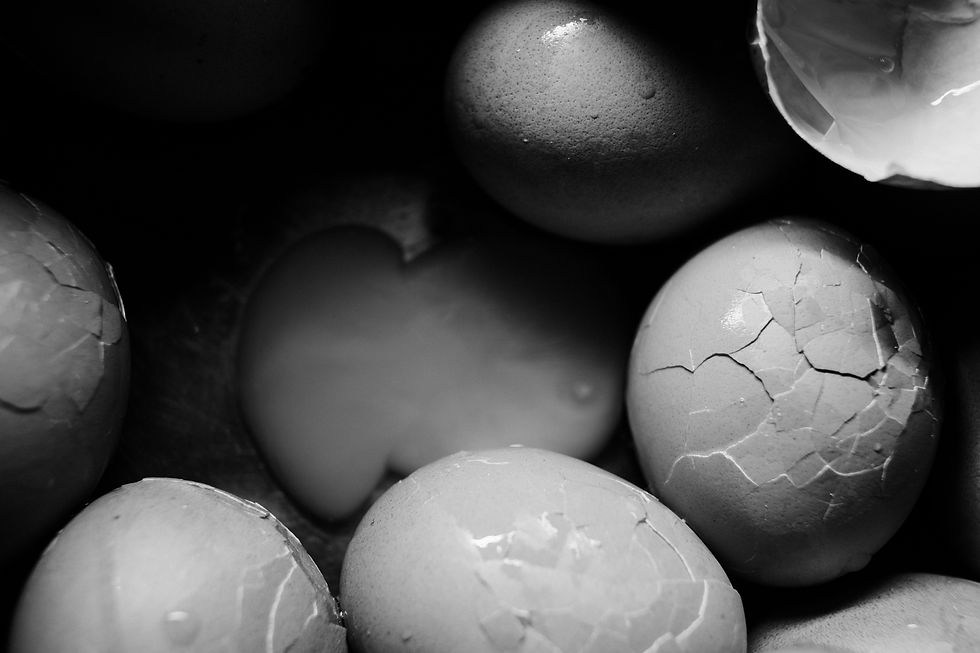In conversation with Spirits
There was a period in my life when suddenly, people close to my heart started to pass away. Some left this life rapidly, departing hardly having said goodbye, while with others, I witnessed their slow departure, accompanying them until the very end. It struck me how different these departures can be: one almost palpable, and another rather ethereal and transient. I began to inquire about how people in various cultures encounter death and how they cope with the trauma of loss. The remembrance suppers in Christianity, Jewish shiva, and preparations for the bhāvacakra in Buddhism fascinate me as I explore how these customs can be interpreted as coping mechanisms for the overwhelming feelings of confusion, sorrow, and fear.
At the same time, I started reading anthropological texts—by Mircea Eliade, Torchinov, and others—and exploring how different cultures approach rites of passage. For a modern person, raised in a big city without a single unifying religion to provide a communal framework, the question of how to grieve can feel especially disorienting. Some of these traditions evoke a profound emotional response in me, and when they do, I begin to visually reimagine and reinterpret them. This is how the project grows—rooted in research but shaped by deeply personal resonance.
Work in progress. (mixed media, analogue and digital.

is it possible to jump if you are being held?
I was often told in childhood:
"Do not think about the dead, you keep him in this world with your thoughts and he suffers."

Mourning the Fallen in War
When one person dies, they are mourned for a long time. But what can be done when hundreds or thousands die? How can one comprehend this? How can someone who is not religious comprehend and endure this?
The world itself is still a temple; you don’t need human-made arches overhead to pray. You can place candles on the windowsill and remain silent together with the sea.

Many peoples believe in the transmigration of souls into animals, reflecting their views on life, death, and the connection between humanity and nature. This concept, known as metempsychosis, manifests in various cultures, highlighting the interdependence of all living beings.

In a number of ancient cultures, the world emerged from a primordial egg.
This object holds a special place in rituals, symbolizing life, death, and transitional states. When my friend's loved one passed away, I boiled eggs and waited for them to spoil. For me, it was part of a ritual and performance, an attempt to step into another layer of reality.


.Unlike Western culture, where a person is perceived as a whole entity, Eastern philosophy emphasizes the multiplicity of personality. In Japanese Noh theater, the mask helps the actor embody the spirit of the deceased, allowing them to return to the world of the living and representing death as a transitional state.

These photos were taken at the Tower of London in 2025, where an installation of ceramic poppies commemorates lives lost in WWI. What strikes me is the abundance of flowers—a gesture that feels both beautiful and desperate. As Svetlana Adoneva writes, in the absence of ritual, flowers become a way to express what cannot be spoken, a way to act when nothing else feels possible.

In various cultures and nations, mirrors are often associated with death and the otherworld. In Western tradition, there is a belief that if a person dies in the house, all mirrors should be covered so that the soul of the deceased does not get trapped in the reflection.

Flowers from the funeral of Queen Elizabeth II in Green Park in 2022, which was entirely covered with flowers for a week following her passing. Flowers play an important role in the mourning rituals of most cultures around the world. They not only beautify funeral ceremonies but also help express emotions associated with loss.